An imposter in the world of snakebite?
I often feel like something of an imposter in the world of snakebite. I didn’t start from a position of wanting to ‘save the world’ nor did I come into it from the admirable humanitarian angle of medicine or public health. Yet here I am. Let me explain how I got into working on reducing the impact of venomous snakebite.
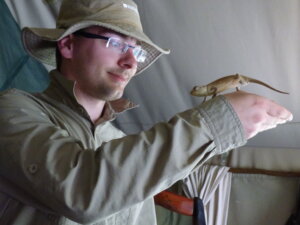
I have always enjoyed natural history from as long as I can remember.
I started with a love of ‘weird’/maligned animals with reptiles, particularly snakes, at the forefront, and this has never faded. I set out to learn as much as I could about them and studied zoology at university in the hope of eventually getting paid to find out more as a scientific researcher. I was lucky enough to make this happen and achieve what was instilled in me from childhood as a lofty goal: getting a job you enjoy doing.
Beyond snakes, my interests in evolution and behavioural ecology grew the more I learned, and these increasingly became centered around venomous species as well. I am passionate about basic knowledge – understanding more about the world around us for knowledge and interest’s sake. I did, and still do, believe that this is an important part of life, and that by teaching others we can have a positive impact. In fact, for a very long time, this educational aspect was the only applied benefit I thought I would ever personally have. I started doing public engagement talks long before my university life, and fundamentally trying to enthuse people about things I find interesting has followed me through to my teaching responsibilities, which I enjoy for the same reason.
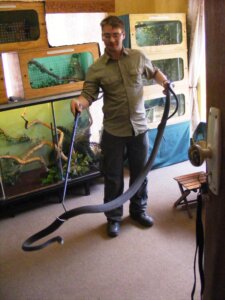
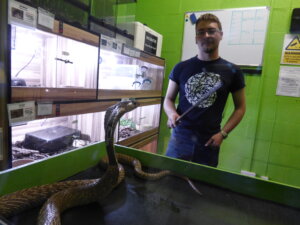
Having an impact in this very indirect way – by hopefully inspiring others to value nature and training other biologists who may go on to do applied work – was enough for me right up until the last very few years. As I wear the hats of a herpetologist, evolutionary biologist, and behavioural ecologist, I am conscious that I have maintained a very non-applied description of myself and my work. More recently, I have realised with increasing clarity that I can take my expertise and experience and use it to make more of a difference to the animals I love and the people who live with them. This has almost been an inevitable accident; inevitable because there is only so long you can work with venomous animals before becoming painfully aware that the complex problems they cause require more than the medical expertise of clinicians and treatment developers to solve.
An awareness of the personal impact of venomous snakebite is clear from the images I show to my students when teaching them about animal venoms. However, after speaking to diverse people around the world, who have to deal with the threat of venomous snakes and the life-changing or life-ending consequences, I decided to think hard about how I could help.
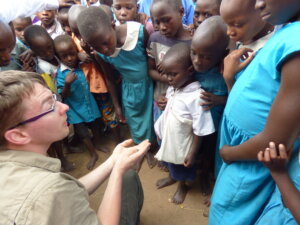
A visit to southwest Uganda in 2014 sowed the seeds. I was there to help on an entirely separate project, partly involving a public engagement project with local schools. It was during this that I first met my main local collaborator Yowasi Byaruhanga. Yowasi is a teacher and a tireless and passionate advocate for helping the communities around the area. He also integrates a ‘living with nature’ attitude into everything he does, instilling respect and appreciation for biodiversity in children and adults alike. Talking with Yowasi during and since my visit taught me that I have skills I could use to help, and his constant quest to help local communities gave him a reputation and standing that could help me put things into action.
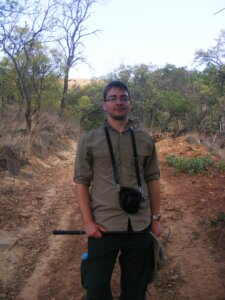
Snakebite is essentially an applied problem of antipredator defence, and that lends itself to many insightful parallels between defence ecology and public health. Theoretical models of multiple defences, so general they are used both in ecology and by military strategists, largely predict that the best defence strategy is to invest heavily in ‘early stages’. In terms of snakebite, this suggests a special focus on prevention should be most fruitful, and that requires engagement with people and an understanding of snake behaviour. I felt I could contribute here.
My background in engagement, expertise in venomous snakes, and new contacts to provide necessary links to local customs, knowledge, and communities has been a fruitful blend. Rural areas of Uganda have limited access to reliable snakebite treatment, and are understudied by the global snakebite community. I have finally stumbled into a situation where I can work with vulnerable local communities to improve snakebite prevention measures. This both reduces the snakebite burden on the people and, since snakes rarely come out of such conflicts alive, helps the snakes as well. I can now make a more direct and positive difference in the world.
